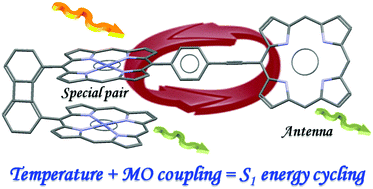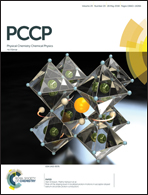What does it take to induce equilibrium in bidirectional energy transfers?†
Abstract
Two dyads built with a co-facial slipped bis(zinc(II)porphyrin), a free base and a bridge, [Zn2]–bridge–[Fb] (bridge = C6H4C![[triple bond, length as m-dash]](https://www.rsc.org/images/entities/char_e002.gif) C, 1 and C6H4C
C, 1 and C6H4C![[triple bond, length as m-dash]](https://www.rsc.org/images/entities/char_e002.gif) CC6H4, 2), exhibit S1 energy equilibrium [Zn2]* ↔ [Fb]* at 298 K, an extremely rare situation, which depends on the degree of MO coupling between the units. At 77 K, 2 becomes bi-directional due to the two large C6H4–[Zn2] and C6H4–[Fb] dihedral angles.
CC6H4, 2), exhibit S1 energy equilibrium [Zn2]* ↔ [Fb]* at 298 K, an extremely rare situation, which depends on the degree of MO coupling between the units. At 77 K, 2 becomes bi-directional due to the two large C6H4–[Zn2] and C6H4–[Fb] dihedral angles.



 Please wait while we load your content...
Please wait while we load your content...